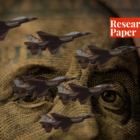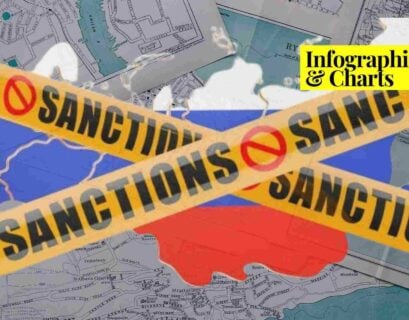Abdul Majeed is a political researcher with special interests in international relations and economics. A businessman by profession, he derives his understanding of political affairs from his active public life experiences as a former member of the Youth Parliament of Pakistan, former International Representative of JLC Student Union, former Postgraduate Executive of the Warwick Student Union, and as the former Head of Punjab for Rotaract (Youth Wing of Rotary International).
History of the Rise
At the behest of the First World War, the United States of America came to prominence on the world stage. In the next few decades, it became the undisputed leader of the free world. But it was not before the collapse of the Soviet Union that the US reached the pinnacle of its success, prompting some to write that the world had “evolved” to a state of permanent convergence towards liberal democracy (Fukuyama, 1992). After about three decades of unprecedented power, the influence of America seems to be facing a decline. With it, the fall of the West seems imminent. The US, it seems, is the last of the western superpowers before the focus shifts to the East.
What Made America Great
The rise of the US as a superpower could be attributed to several factors including the geography of the US, its governmental structure, the dynamics and characteristics of the US population, or even the global circumstances.
The country is protected by the Atlantic and Pacific Oceans to its east and west, respectively, preventing any attacks from outside forces. To the north and south lie docile neighbours with limited foreign ambitions. As a result, the US remained relatively safe from international conflicts penetrating its homeland (Marshall, 2016).
The US system of governance favored continuity and stability of government policies. This allowed the government to pursue long-term massive infrastructure projects across the country. Strong political and economic institutions encouraged hard work and innovation, couple that with the sheer size of the US population, American firms became some of the most competitive companies in the world (Acemoglu & Robinson, 2013).
During the 20th century, the US was already a massive economy that was largely unaffected by the two World Wars. The shattered economies of the European nations needed outside support, and with it came the US influence in their foreign policies. The US was now the leader of the free world, promoting liberal democracy and free trade around the globe.
The Economic Decline of America
In 2015, before getting elected as the President of the US, Donald J. Trump said in his speech, “Our country is in serious trouble. We don’t have victories anymore.” He continued, “When did we last beat Japan at anything? They send their cars over by the millions, and what do we do? When was the last time you saw a Chevrolet in Tokyo?”
Trump had similar views regarding trade with China. Economies of the East were blossoming, so much so that people in the US were getting frightened. Trade wars initiated during the Trump presidency point to the US populace sentiment that American firms are finding it hard to compete with foreign firms and that the US should adopt protectionist approaches (Frankopan, 2020).
Although America remains the largest economy in the world, its relative size has faced a significant decline over the years. Its share of the global economy steadily fell from 40% in 1960 to 24% in 2019 (World Bank, 2019). In the bipolar world of the 1970s, the GDP of the Soviet Union was about a third of that of the US, at a time of oil shocks and stagflation in the US (Kersten, 2021). China’s nominal GDP is already around two-thirds that of the US, and larger than the US if measured on purchasing power parity basis (World Bank, 2019).
The US population is growing complacent; the hard-working culture that once powered growth is dying out (Cowen, 2017). American workers are finding it harder to compete with foreign workers for jobs, leading to a rise in racism and demands to curb immigration.
The largest chunk of economic growth in the future would come from the East, and the US is failing to take advantage of that. Under the umbrella of the Belt and Road Initiative (BRI), China has been able to undertake massive infrastructure projects in Asia and Africa, with the potential to revive the old silk roads connecting Europe, Asia, and Africa. Despite identifying these opportunities long ago, the US’ inaction gave China the chance to greatly benefit from such opportunities (Hillman & Sacks, 2021).
Investment in infrastructure projects within America is also undergoing a decline even when the requirement is great (McBride, 2021). Budget allocation of general science, space, and technology has also declined over the years; whereas, the portion of unproductive subsidies has risen significantly in the US budget. Such budget misallocations paint a bleak picture going forward, contributing to the fall of the US.
Political Decline
The 2016 US Presidential elections were marred by voices of foreign intervention in the electoral process. Such allegations were indeed raised by foreigners of US intervention in their country but rarely raised by the US of foreign intervention in their own country. Although in 1968, Nixon had allied with the Vietnamese authorities, exploiting the Vietnam War situation to influence his election, and the 1979 hostage situation in Iran helped Reagan win the election, this was the first time that a foreign player did not even need a crisis to exploit.
The president who came to power, as a result, proved to be a source of embarrassment for the nation. Trump instigated racism, praised authoritarian leaders, undermined political institutions, challenged the US presidential norms, incited attacks on the Capitol, and made the First Presidential Debate between Biden and him a source of national humiliation. All this was barely an advertisement for a healthy democracy.
The popularity of democracy, it appears, is on the decline in America. According to Pew Research Centre (2020), 59% of US citizens are dissatisfied with the way democracy is working in their country. Democracy is gradually sliding away in the US. The Economist Intelligence Unit (EIU) Democracy Index 2020 marked the US as a flawed democracy for the fifth consecutive year, continuing the downward trend since 2006 when the index began recording. Freedom House ranks the US below Mongolia and just above Ghana in their 2020 report, a massive 11-point drop from the 2010 report.
Technological Decline
The technological superiority of the US could vanish in years to come. The US Federal Research Spending is the lowest it has been in 60 years (Konicki, 2020). Total factor productivity growth has slowed down since 1970 and is at its lowest in more than a century. According to a study by Code.org, only 47% of US schools offer any course in computer science as of 2020. As per the World Economic Forum (2016), the US ranks third in STEM graduates and continues to fall behind China and India.
Research and development (R&D) in the corporate sector is also dwindling; the number of publications per firm in America is on a steady decline. The R&D awards won by Fortune 500 firms have also drastically fallen (Arora et al., 2019). Furthermore, the share of foreign-origin patents registered in the US is on a steady rise (The U.S. Patent and Trademark Office, 2019).
The 5G race was the space race of this age, which the US easily lost. The Chinese tech giant, Huawei, introduced 5G and all the US was able to do was discourage its adoption on the grounds of security risks, failing even to convince its own allies (Sacks, 2021). Even in a contemporary space race, the US lags behind. China is the first country to land humans on the far side of the moon (Schwartz, 2019) while the US astronauts need Russian rockets to go to space (Markovich et al., 2021).
International Order Decline
The liberal international order that favored the US is falling apart. The hegemony of the US dollar, and with it the US’ ability to place sanctions, is at risk. China is partnering with other major economies to trade and complete financial transactions in its own currency (Kumar & Rosenbach, 2020). Moreover, if the US pressurizes any country greatly, it now has the option to join the Chinese camp.
With abundant cash reserves, China is offering an alternative to international financial institutions such as the IMF. Although the occurrences are yet limited, this number is likely to grow. This does not mean that China has stopped contributing to international financial institutions; the country retains its place internationally. All this shows is that it has found a way for exclusive political bargaining (Global Development Policy Center, 2021).
According to Pew Research Centre, the dissatisfaction rate in 2020 with the workings of democracy in their countries was 52% in a survey of 34 representative countries around the world. According to EIU Democratic Index 2020, 70% of countries showed a decline in their overall score in democracy ratings, leading to the global average score falling to its lowest since 2006.
Commensurating with this, Freedom House has revealed that the number of free countries fell to the lowest in 15 years and the number of countries that have scored an aggregate negative score outnumbers those that scored an aggregate positive score in each of those years.
The rise of Russia and China points to a reality that economic and political models propagated by the West are not necessary for a nation to grow. Just like Communism during the Cold War, it has the potential to provide a parallel economic and political model.
Since the days of the Cold War, the trend of unilateral military action for border expansion was dying out, but the trend has lately reversed. The Russian annexation of Crimea in 2014, the Azerbaijani conquest of Karabagh in 2020, and the Chinese occupation of North India in 2020 point to the continuous decline in the importance of the UN and the apparentness of the withdrawalist attitude of America.
Political support for globalization has reversed in the US as well as Europe. In the last five years, 70% of all war-related deaths took place in the Middle East. With a decline in the dependence of America on Middle Eastern oil, the incentive of the US to intervene in the Middle East could be mitigating (Jones & Malcorra, 2021). The war in Afghanistan has lost its popularity and the US has announced to withdraw its troops, especially after the insistence of the Russia-China bloc, with Pakistan going as far as hinting at the disruption of NATO supply lines.
At such a time, the emergence of a Russia-China bloc could tip the scales. The initial potential members—China, Pakistan, Iran, Turkey, and Russia—sketch a geographic ring that offers significant geopolitical protection to member states.
The Military Decline of America
During the Cold War, the US spent 6% of its GDP on its military, now it spends close to half of that and yet the public still objects (Krepinevich, 2020). In line with the profitability of lobbyists, the US military spending is disproportionately spent on outdated weaponry, unfit to tackle the rising threats, especially from China and Russia.
The military technology of China and Russia is on a sharp rise. Leading think tanks have reported that China could jam the United States’ communication, rendering the US warships futile. It also has the capability to track the US ships through the plantation of chips and the ability to send misleading data (Krepinevich, 2020). All this restricts the US’s ability to protect its allies, such as Taiwan in the South China Sea, and its interests.
The US has historically allied itself with relatively powerful nations—Britain, France, and Russia in the two World Wars, and Western Europe and Japan during the Cold War. The tables have now turned. US allies are not capable of any significant military action alone (Krepinevich, 2020). The European Union is breaking apart, France and Germany are entertaining thoughts of pursuing independent foreign policies, and the US has fallen out with NATO’s largest continental force, Turkey.
The failure of a NATO-led Afghanistan war, despite any superpower support to Taliban, raises questions on the future success of unilateral US military action against the Russia-China bloc. The 9/11 attacks on US soil highlighted how war could be brought to the US homeland even by non-state actors. A confrontation with the Russia-China bloc could prove more devastating and act as a greater deterrent against unilateral US intervention around the globe.
Conclusion
Factors that made the US a superpower are no longer on its side. The safety provided by its geography is eroding away, its interest in infrastructure projects, innovation, and competitive firms is falling short of expectations, and the US population is no longer working hard enough. Furthermore, the US economy’s share of the global economy is shrinking, and the political stability and strong political institutions now seem vulnerable.
The role and importance of the liberal international order and institutions are fading away and the rise of Russia and China is paving the way for a bipolar world order. The US is still the dominant superpower in the world, but the circumstances are changing. Given its current decline, it is unlikely that America will remain the sole superpower for long.
References
- Acemoglu, D., & Robinson, J. A. (2013). Why nations fail: The origins of power, prosperity, and poverty (Illustrated ed.). Currency.
- Arora, A., Belenzon, S., Patacconni, A., & Suh, J. (2019, November 26). Why the U.S. innovation ecosystem is slowing down. Harvard Business Review. https://hbr.org/2019/11/why-the-u-s-innovation-ecosystem-is-slowing-down.
- Bobo, L. & Shevtsova, L. (2012). The china model in theory and practice from a 21st-century myth: Authoritarian modernization in Russia and China. Carnegie Moscow Centre. https://www.jstor.org/stable/resrep21086.7.
- Code.org. (2020, October 14). 2020 state of CS report shows less than half of U.S. schools teach CS. Medium. https://codeorg.medium.com/2020-state-of-cs-report-shows-less-than-half-of-u-s-schools-teach-cs-2c733e3c5d54#:%7E:text=Access%20and%20participation%20in%20foundational%20CS%20courses&text=Across%20the%20country%2C%2047%25%20of,for%20students%20from%20all%20demographics.
- Cowen, T. (2017). The complacent class: The self-defeating quest for the American dream (1st Edition). St. Martin’s Press.
- Economist Intelligence Unit (2021, February 2). Democracy index 2020: In sickness and in health? https://www.eiu.com/n/campaigns/democracy-index-2020/.
- Frankopan, P. (2020). The new silk roads: The new Asia and the remaking of the world order (Reprint ed.). Vintage.
- Freedom House (2021). Democracy under siege. https://freedomhouse.org/report/freedom-world/2021/democracy-under-siege.
- Fukuyama, F. (1992). The end of history and the last man (Reissue ed.). Free Press.
- Hillman, J., & Sacks, D. (2021). China’s Belt and Road: Implications for the United States. Council on Foreign Relations. https://www.cfr.org/report/chinas-belt-and-road-implications-for-the-united-states/.
- Jones, B. & Malcorra, S. (2021). It is now time to focus on multilateral order. Brookings. https://www.brookings.edu/blog/order-from-chaos/2021/04/19/it-is-now-time-to-focus-on-multilateral-order/.
- Kersten, A. (2021). Why renewing American innovation? The “Endless Frontier Act” and Biden’s bid for maintaining U.S. global competitiveness. Center for Strategic & International Studies. https://www.csis.org/analysis/why-renewing-american-innovation-endless-frontier-act-and-bidens-bid-maintaining-us-global.
- Konicki, J. (2020, June 9). US federal research spending is at a 60-year low. Should we be concerned? American Enterprise Institute – AEI. https://www.aei.org/economics/us-federal-research-spending-is-at-a-60-year-low-should-we-be-concerned/#:%7E:text=With%20less%20urgency%20in%20the,spending%20equaled%200.6%25%20of%20US.
- Krepinevich, A. (2020, December 10). Finding strength in decline. Foreign Affairs. https://www.foreignaffairs.com/articles/united-states/2020-12-10/finding-strength-decline.
- Kumar, A., & Rosenbach E. (2020). Could China’s digital currency unseat the dollar? Foreign Affairs. https://www.foreignaffairs.com/articles/china/2020-05-20/could-chinas-digital-currency-unseat-dollar.
- Lachmann, R. (2011). The roots of American decline. SAGE Journals. https://journals.sagepub.com/doi/pdf/10.1177/1536504211399050.
- McBride, J. (2021). The state of U.S. infrastructure. Council on Foreign Relations. https://www.cfr.org/backgrounder/state-us-infrastructure.
- Markovich, S., Chatzky, A., & Siriurapu, A. (2021). Space exploration and U.S. competitiveness. Council on Foreign Relations. https://www.cfr.org/backgrounder/space-exploration-and-us-competitiveness
- Marshall, T. (2016). Prisoners of geography: Ten maps that explain everything about the world (Politics of Place) (1st ed.). Scribner Book Company.
- Sacks, D. (2021, March 29). China’s Huawei Is winning the 5G race. Here’s what the United States should do To respond. Council on Foreign Relations. https://www.cfr.org/blog/china-huawei-5g.
- Schwartz, M. (2019, January 3). China becomes first country to land on far side of moon, state media announce. NPR. https://www.npr.org/2019/01/03/681825762/china-becomes-first-country-to-land-on-far-side-of-moon-state-media-announces.
- Sundquist, J. (2021). Bailouts from Beijing: How China functions as an alternative to the IMF. Global Development Policy Center. https://www.bu.edu/gdp/2021/03/08/bailouts-from-beijing-how-china-functions-as-an-alternative-to-the-imf/.
- U.S. Patent and Trademark Office (2019). U.S. patent statistics summary table, calendar years 1963 to 2019. https://www.uspto.gov/web/offices/ac/ido/oeip/taf/us_stat.htm.
- Wike, R., & Schumacher, S. (2020, February 27). Satisfaction with democracy. Pew Research Center. https://www.pewresearch.org/global/2020/02/27/satisfaction-with-democracy/.
- World Bank (2019). GDP (current US$) – China, United States. https://data.worldbank.org/indicator/NY.GDP.MKTP.CD?locations=CN-US.
- World Bank (2019). GDP, PPP (current international $) – China, United States. https://data.worldbank.org/indicator/NY.GDP.MKTP.PP.CD?locations=CN-US.
- World Economic Forum (2016). Learning through the life-course. https://reports.weforum.org/human-capital-report-2016/learning-through-the-life-course/.
- Zeihan, P. (2016). The accidental superpower: The next generation of American preeminence and the coming global disorder (Reprint ed.). Twelve.
If you want to submit your articles and/or research papers, please check the Submissions page.
The views and opinions expressed in this article/paper are the author’s own and do not necessarily reflect the editorial position of Paradigm Shift.



















